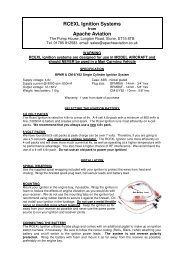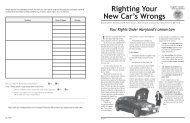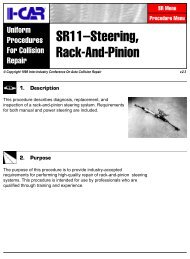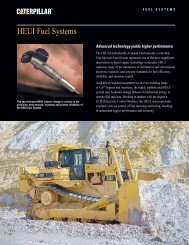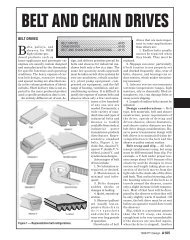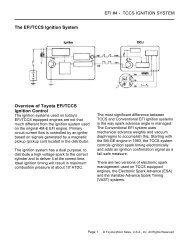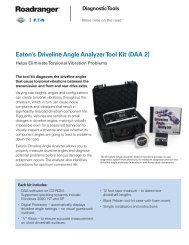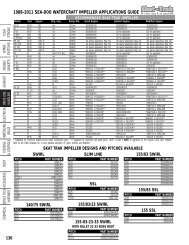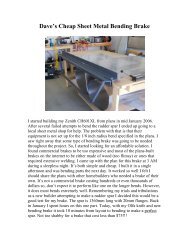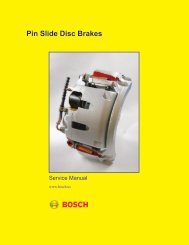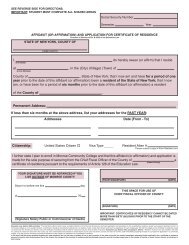DIESEL FUELS & DIESEL FUEL SYSTEMS
Diesel Fuel Systems - weindex.info
Diesel Fuel Systems - weindex.info
You also want an ePaper? Increase the reach of your titles
YUMPU automatically turns print PDFs into web optimized ePapers that Google loves.
Application and Installation GuideDiesel Fuels & Diesel Fuel Systemsextremely harmful to the engine’sinternal components.Pipes, hoses and fittings must bemechanically strong and resistant todeterioration due to age orenvironmental conditions. They mustalso be airtight to avoid entry of airinto the suction side of the fuelsystem. A joint, which is leak-tightto fuel, can sometimes allow air toenter the fuel system, causingerratic running and loss of power.SizingSizing of pipes, hoses and fittingsmust be adequate to minimize flowloss.Sizing for a particular application isdetermined by the supply and returnline restrictions. This can beestimated with help from the PipingSystem Basic Information section ofthe Application & Installation Guide.The maximum allowable restrictionsare published in the TMI.Generally, the supply line carryingfuel to the fuel transfer pump andthe return line carrying excess fuelback to the tank should be nosmaller in size than the connectionfittings on the engine. In addition,the return line should be at least aslarge as the supply line.If the fuel tank supplies multipleengines over 9.14 m (30 ft) from thetank, or ambient temperatures arelow, larger fuel supply and returnlines should be considered to ensureadequate flow. The overflow linefrom the day tank (or, if no day tankis used, the engine fuel return line)should be one size larger than thesupply and return lines.RoutingFuel lines should be well routedand clipped with flexible hoseconnections where relative motion ispresent. Lines should be routedaway from hot surfaces, likemanifolds and turbochargers, toavoid fuel heating and potentialhazard if a fuel line should fail.Fuel lines should be routed toavoid formation of traps, which cancatch sediments, or pockets ofwater, which will freeze in coldweather.Whenever possible, route fuel linesdown low, so any potential leakagewill be confined to the fuel tankbase or floor space. Leaks fromoverhead fuel system componentsmay fall onto hot machinery,increasing the likelihood of firedanger.Route fuel lines to avoid crossingpaths and walkways. Protect fuellines from abrasion and damage.Whenever possible, route fuel linesso they are visible for leak checking.Fuel Filtration SystemsClean fuel that meets Caterpillarfuel recommendations providesoutstanding engine service life andperformance. The use of lesser fuelsis a compromise and the risk is theuser’s responsibility. Dirty fuel andfuels not meeting Caterpillar’sminimum specifications willadversely affect:• The perceived performance ofthe combustion system andfuel filters.©2005 Caterpillar®All rights reserved. Page 23



